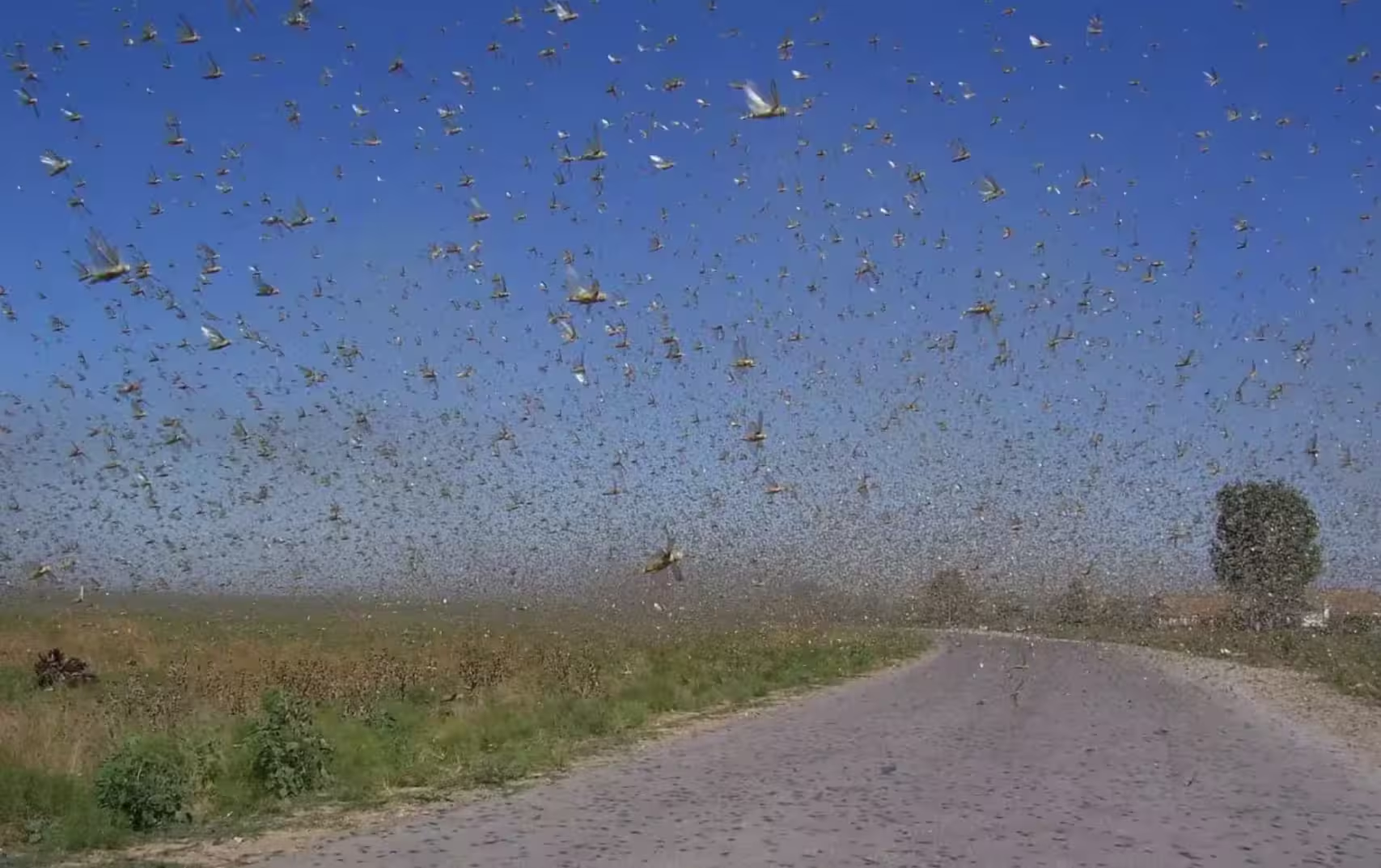More than 500,000 hectares of land in Uzbekistan have been affected by a locust invasion, according to the Plant Quarantine and Protection Agency under the Ministry of Agriculture.

As of June 19, officials have monitored 875,087 hectares across the country. Locusts were detected on 515,830 hectares, and chemical treatment has already been carried out on 507,181 hectares to contain the spread.
The most active anti-locust operations are currently underway in the Republic of Karakalpakstan, as well as in the Khorezm, Bukhara, Navoi, Syrdarya, and Tashkent regions. In addition to locusts, chemical treatment is being conducted against the saxaul beetle in these areas.
Authorities report that the main hotspots have already been neutralized in the Kashkadarya, Surkhandarya, Samarkand, Jizzakh, Andijan, Namangan, and Fergana regions. The locust and mulberry moth control service is now operating around the clock, with chemical spraying taking place during early morning and evening hours, while daytime is dedicated to monitoring and coordination.
To support citizens, the government has launched a 24/7 helpline, available at 1288 or (71) 202-10-00. All treatment services and pesticides are provided free of charge. Authorities also dismissed social media rumors that locusts had disrupted a wedding in Karakalpakstan.
The growing challenge has prompted Uzbekistan to strengthen cross-border cooperation with neighboring Kazakhstan and Kyrgyzstan. The three countries are working together to enhance regional readiness and ensure food and environmental security.
Looking ahead, Uzbekistan anticipates that locusts could spread across 608,000 hectares in 2025. Officials warn that climate change and rising temperatures may further increase the scale and frequency of outbreaks. In response, regional operational headquarters have been established, and emergency response teams remain on high alert.




